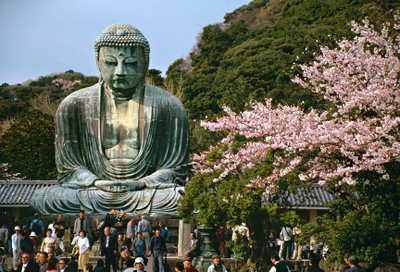 Perhaps no other local illustrates the rugged American Southwest better than Monument Valley. This must be exactly how the famous Hollywood director John Ford felt when he first discovered this magical landscape in the mid-thirties, and is the reason why he chose to shoot several of his blockbuster westerns here including, Stagecoach in 1939 and How The West Was Won in 1962. Although it still receives relatively few tourists compared to other parks in the region such as Grand Canyon National Park in Arizona or Zion and Bryce canyons in Utah, most people still find it familiar. This is no doubt due to the countless advertising campaigns that have featured the monuments as the backdrop for marketing their rugged image. Toyota trucks and even the United States Marine Corps have used the scenery, but nobody seems to spend more time here than the Marlboro Man. Yes, that fictional cowboy the Marlboro Man is the reason why most people in the world have seen pictures of Monument Valley, whether they realize it or not. In fact, I have noticed billboards in Kathmandu and posters in Tokyo featuring Monument Valley's vistas and always point out to people, "Hey,that's where I'm from". Actually, the only people that can really claim to be "from" Monument Valley are the people of the Navajo Nation as Monument Valley sits entirely inside the borders of the Navajo Indian Reservation, the largest such reservation in the United States. For centuries the Navajo have been ranching and farming this land and consider many of the monuments to be sacred.
Perhaps no other local illustrates the rugged American Southwest better than Monument Valley. This must be exactly how the famous Hollywood director John Ford felt when he first discovered this magical landscape in the mid-thirties, and is the reason why he chose to shoot several of his blockbuster westerns here including, Stagecoach in 1939 and How The West Was Won in 1962. Although it still receives relatively few tourists compared to other parks in the region such as Grand Canyon National Park in Arizona or Zion and Bryce canyons in Utah, most people still find it familiar. This is no doubt due to the countless advertising campaigns that have featured the monuments as the backdrop for marketing their rugged image. Toyota trucks and even the United States Marine Corps have used the scenery, but nobody seems to spend more time here than the Marlboro Man. Yes, that fictional cowboy the Marlboro Man is the reason why most people in the world have seen pictures of Monument Valley, whether they realize it or not. In fact, I have noticed billboards in Kathmandu and posters in Tokyo featuring Monument Valley's vistas and always point out to people, "Hey,that's where I'm from". Actually, the only people that can really claim to be "from" Monument Valley are the people of the Navajo Nation as Monument Valley sits entirely inside the borders of the Navajo Indian Reservation, the largest such reservation in the United States. For centuries the Navajo have been ranching and farming this land and consider many of the monuments to be sacred.Just South of the border with Utah, these are probably the most famous monuments in the valley and together they are known as The Mittens. No matter how many times you go to Monument Valley, they never cease to inspire awe with their shear size and perfectly eroded shapes of a left and right mitten. I chose this composition because I felt the beautifully striated boulders in the foreground not only lead the viewers eyes nicely into the photograph but also added the depth I needed in such a vast landscape shot. Recently, I came across an old photo of the East Mitten taken decades ago by Ansel Adams in which his tripod must have been in the same exact spot as mine. Had I seen that photograph ahead of time, I probably never would have taken this shot because the challenge for any professional photographer in a place as photographed as Monument Valley is to get a unique perspective of a familiar place. However, in this case I felt very proud and honored. Not only did I stand where the legend once stood but, for that one photograph, I also experienced the same creative vision as him.


